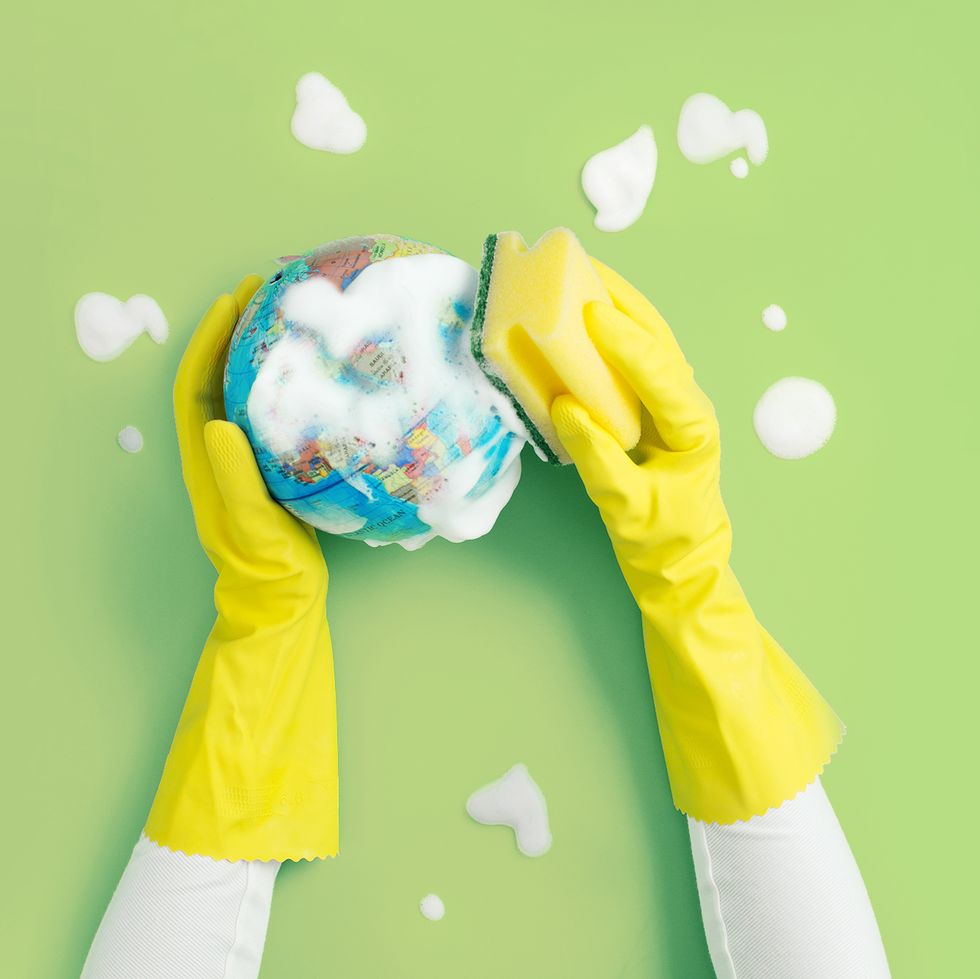Avoiding Greenwashing and Why It Matters

We can all agree, there is a lot of information out there. As a society that functions with pocket-sized computers and constant internet accessibility at our fingertips, it can be overwhelming to sift through the noise. One thing we unfortunately see all too much, is the use of greenwashing as a confusing tactic across most industries. The good news is that (using your pocket-sized computer) with a little research, you can dig into the truth and help point that eco-conscious compass!
What Is Greenwashing?
Greenwashing is defined as the act of making false or misleading statements about the environmental benefits of a product or practice. It’s an organization that spends more time and money marketing itself as environmentally friendly than actually reducing its impact. It’s also sometimes known as “climate washing.”
Greenwashing involves making an unsubstantiated claim to deceive consumers into believing that a company’s products are environmentally friendly or have a greater positive environmental impact than they actually do. In addition, greenwashing may occur when a company attempts to emphasize sustainable aspects of a product to overshadow the company’s involvement in environmentally damaging practices. Performed through the use of environmental imagery, misleading labels, and hiding tradeoffs, greenwashing is a play on the term “whitewashing,” which means using false information to intentionally hide wrongdoing, error, or an unpleasant situation in an attempt to make it seem less bad than it is.
In the fashion industry, this shows up as marketing clothing as “sustainable” through deceitful branding, ambiguousadvertising, and green claims without transparency. Making things more confusing, some eco-claims are only partially inaccurate or phrased in a misrepresentative way rather than blatantly false. Greenwashing doesn’t always have bad intentions; it can be a case of overenthusiasm for a greener product knowing that’s what buyers are looking for. In any case, it’s unfortunately on the rise in a time where we’re all trying to do the right thing and make more eco-conscious decisions.

How to Spot Greenwashing?
Sadly, it shouldn’t require detective skills ad research to find out if the purchase you’re making is legitimately sustainable, or not. However, there are a few red (green) flags that you can look out for so you can make an educated, informed purchase!
- Feel Good, Fluffy Language – What does “natural” actually mean? Is it really “organic?” For social responsibility, note that there’s a difference between a “living wage” and “minimum wage.”
- Green Products, Dirty Company – Watch out for double standards. Question what bigger steps the company is taking to reduce their impact.
- Avoiding Eye Contact – If the “sustainable” claims are vague or the clothing’s “recycled content” is unspecified, be dubious. Look for data, facts, and transparency to back up claims.
- Made Up Certifications – Meaningful certifications in the apparel industry include: bluesign®, OEKO-TEX®, FSA-Certified, Global Organic Textile Standard, B Corp Certification, Fairtrade International, and Global Recycling Standard. Watch out for green-sounding certifications that aren’t on this list and, ultimately, are meaningless. Which brings us to…
- If it sounds too good to be true, it probably is – Not all that glitters is green, or so the saying goes. Use your sleuthing skills to find information that backs up claims.

Greenwashing is deceitful and unethical because it misleads investors and consumers who are genuinely seeking environmentally friendly companies or products. Often, green products can be sold at a premium, making them more expensive, which can lead consumers to overpay. A good way to avoid greenwashing and hold a company accountable is digging into their About and Company pages to look for transparency. At Color it Green, this is one thing we do for you! We are only interested in brands and companies that talk the talk, and walk the walk. And we’re holding them accountable so you don’t have to! It’s always a step in the right direction when you’re aiming towards an earth-friendly purchase, but remember that not all that glitters is green!
